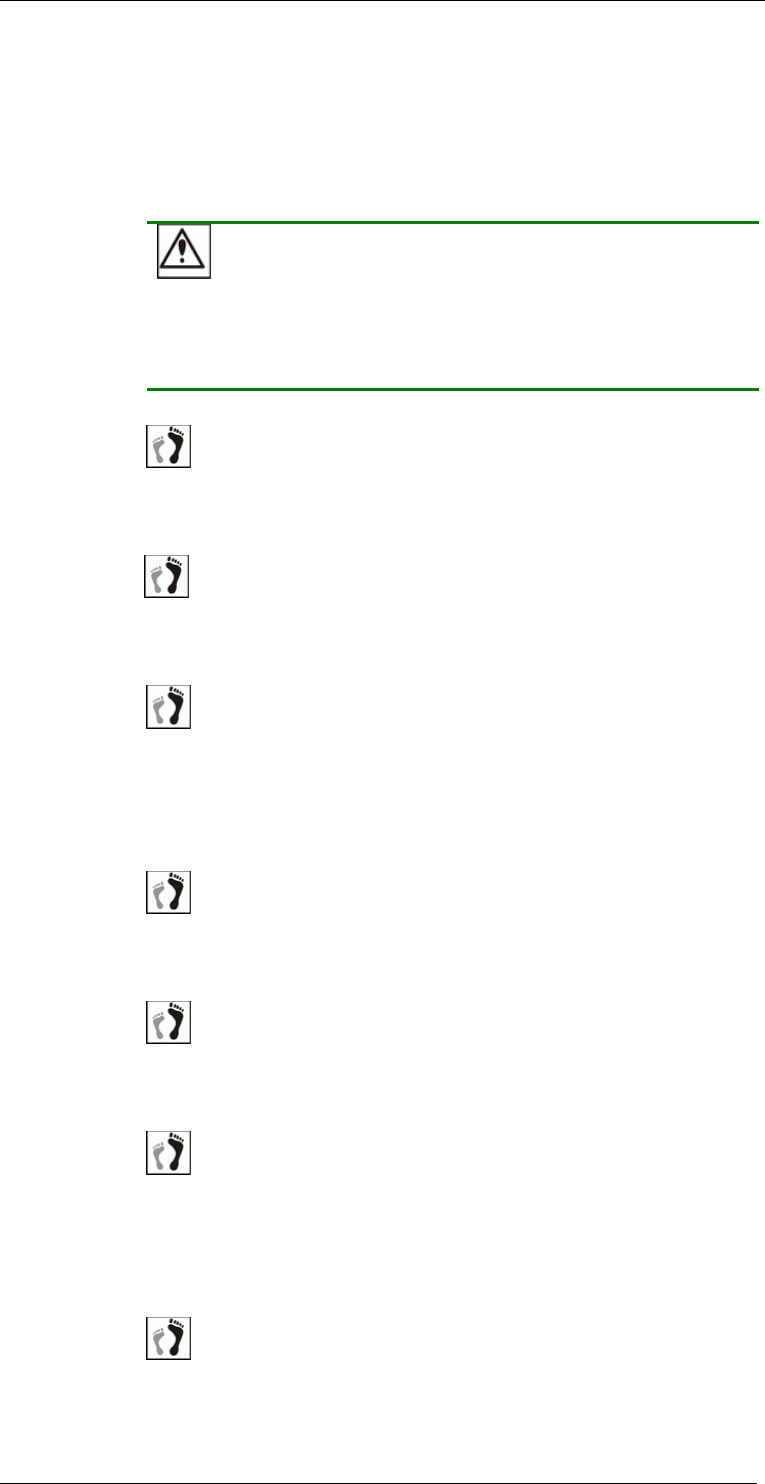
Chapter 2: Hardware Installation
2.4 General Installation Procedure
Following all the instructions provided below can save subsystem
installation time. Detailed, illustrated instructions for each component are
given in the following sections.
CAUTION!
To ensure that your system is correctly installed, please follow the steps
outlined below. If you follow these steps, installation will be fast and
efficient. If you do not follow these steps, you may accidentally install the
hardware incorrectly.
Step 1. Unpack: Unpack the subsystem and confirm that all the
components on the Unpacking Checklist have been
included. (See Section 2.5)
Step 2. Install an optional BBU: If an optional BBU has been
separately purchased, it should be installed prior to
operating the subsystem. (See Section 2.7)
Step 3. Rack/Cabinet installation: If the subsystem is going to be
installed in a rack or cabinet, it should be installed prior to
installing the hard drives. Installing the subsystem into a
rack or cabinet requires at least two (2) people. (See
Section 2.10)
Step 5. Install hard drives: Separately purchased SATA-II/SATA-
I hard drives must be individually installed into the drive
trays. (See Section 2.8)
Step 6. Install drive trays: After the hard drives have been
installed into the drive trays, the drive trays must be
installed into the enclosure itself. (See Section 2.9)
Step 7. Cable connection: Use the power cords that came with the
subsystem to connect the subsystem to the main power
source. Use self-purchased RJ-45 cables (see Chapter 4 for
more details) to connect host ports to the network or
external devices.
Step 8. Power up: Once the components have been properly
installed and all cables are properly connected, you can
General Installation Procedure
2-5


















